Refrigerant Pipes Cost Estimator
Refrigerant pipes are essential components of HVAC systems, responsible for carrying refrigerants between different parts of the system, such as the compressor, evaporator, and condenser. Whether you’re installing new refrigerant pipes in a residential, commercial, or industrial building, understanding the costs involved is crucial for effective budgeting and planning. Estimate Florida Consulting provides expert cost estimator services to help you plan and execute your refrigerant pipe installation or replacement project with precision, ensuring that your project stays within budget while meeting all safety and efficiency requirements.
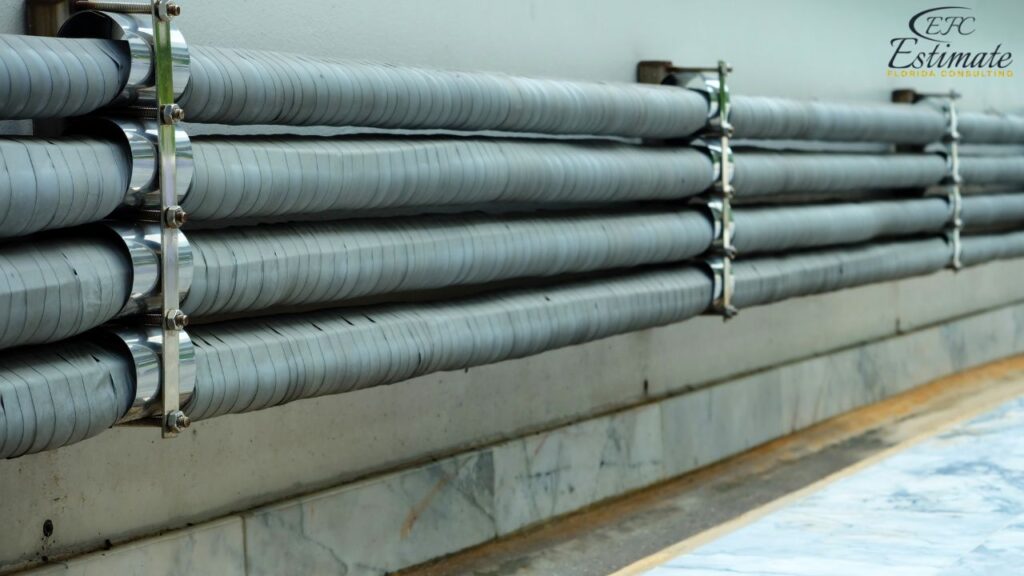
How Much Do Refrigerant Pipes Cost?
The cost of installing or replacing refrigerant pipes can vary depending on several factors, including the type of material used, the length of the pipe, the complexity of the installation, and labor costs. On average, refrigerant pipe installation costs range from $10 to $30 per linear foot, including materials and labor. Understanding these costs is essential for effective budgeting and planning, ensuring that your project stays within financial constraints while achieving the desired results.
Refrigerant Pipes Costs by Project Scope and Application
Here’s a breakdown of estimated refrigerant pipe costs by application, providing you with a clear understanding of how different project types impact overall costs:
Application | Estimated Refrigerant Pipe Cost per Linear Foot | Total Cost Range |
Residential HVAC System | $10 – $25 | $1,000 – $5,000 (depending on length and complexity) |
Commercial HVAC System | $12 – $30 | $3,000 – $15,000 (depending on length and complexity) |
Industrial HVAC System | $15 – $30 | $5,000 – $30,000 (depending on length and complexity) |
Split System Installation | $10 – $25 | $1,500 – $10,000 (depending on length and complexity) |
Factors Influencing Refrigerant Pipe Installation Costs
The cost of installing refrigerant pipes can vary widely depending on several factors, including the type of material, the length of the installation, labor costs, and additional expenses such as insulation and fittings. Understanding these factors will help you estimate the total cost of your project and make informed decisions that align with your budget.
Type of Refrigerant Pipe: Copper, Aluminum, or Flexible Line Sets
The type of material used for refrigerant pipes is one of the most significant factors affecting the cost of your installation. Different materials have different price points, durability, and installation requirements. The most common types of refrigerant pipes include copper, aluminum, and flexible line sets.
Type of Refrigerant Pipe | Average Cost per Linear Foot |
Copper Pipe | $6 – $18 |
Aluminum Pipe | $4 – $10 |
Flexible Line Sets | $12 – $36 |
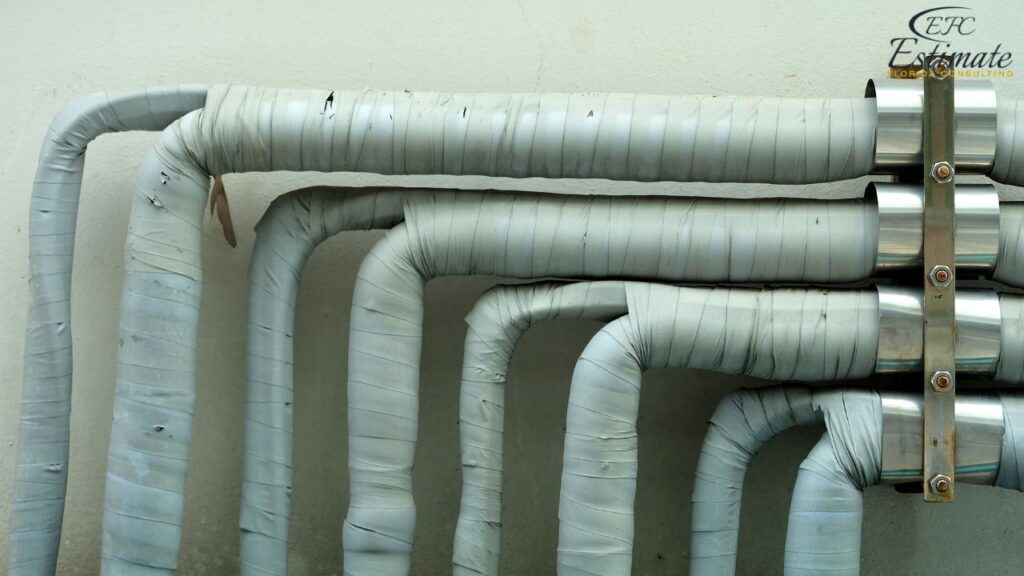
Copper Pipe:
Copper is the most commonly used material for refrigerant pipes due to its excellent thermal conductivity, durability, and resistance to corrosion. Copper pipes are typically priced between $6 and $18 per linear foot, depending on the diameter and thickness. Copper is highly reliable and is the preferred choice for most residential and commercial HVAC systems. Its flexibility allows for easier installation in tight spaces, and its durability ensures a long service life.
Aluminum Pipe:
Aluminum is a less common alternative to copper for refrigerant pipes, with prices ranging from $4 to $10 per linear foot. Aluminum is lighter and less expensive than copper, but it is also less durable and more prone to corrosion. While aluminum pipes may be used in certain applications, they are generally not recommended for long-term use in HVAC systems due to their lower performance and durability compared to copper.
Flexible Line Sets:
Flexible line sets are pre-insulated copper pipes that come in a set, including both the liquid and suction lines. These line sets are designed for quick and easy installation, especially in split system air conditioners and heat pumps. Flexible line sets are priced between $12 and $36 per linear foot, depending on the brand and insulation quality. While more expensive than standard copper pipes, flexible line sets offer the advantage of convenience and time savings during installation, making them a popular choice for residential applications.
Length of Installation: Calculating the Required Pipe Length
The length of the refrigerant pipe required for your installation will significantly impact the overall cost. Longer runs of pipe will require more material and labor, increasing the total expense.
The length of the refrigerant pipe depends on the distance between the indoor evaporator coil and the outdoor condenser unit, as well as the complexity of the route (e.g., the need to navigate around obstacles or through walls).
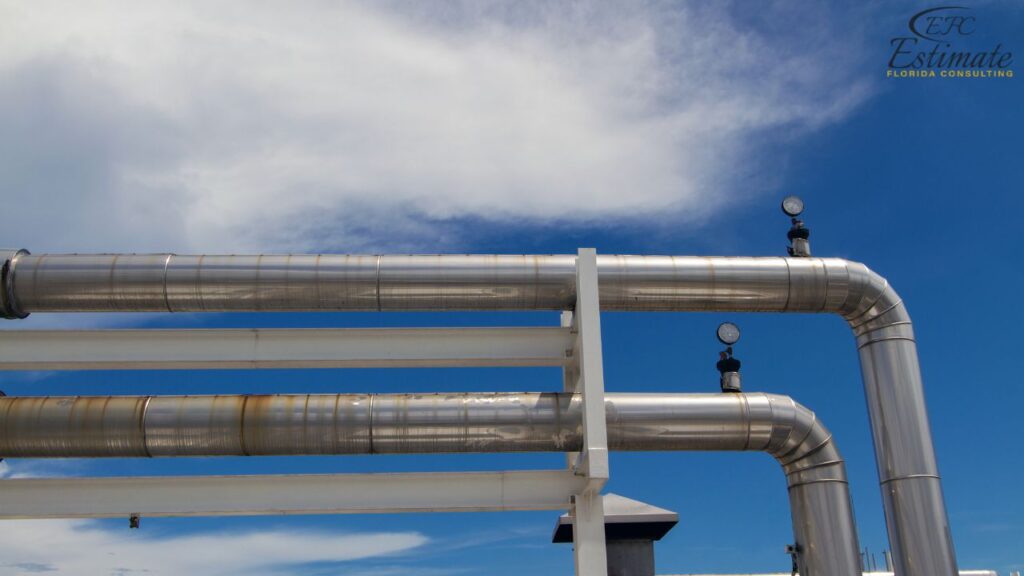
Length of Refrigerant Pipe (Feet) | Estimated Material Cost |
Up to 25 Feet | $150 – $900 |
25 – 50 Feet | $300 – $1,800 |
50 – 100 Feet | $600 – $3,600 |
Over 100 Feet | $1,200 – $7,200+ |
Accurately estimating the length of the refrigerant pipe needed for your project is essential for budgeting. It’s important to consider not only the straight-line distance but also any additional length required to navigate around obstacles or accommodate bends and turns in the pipe.
Labor Costs: Professional Installation vs. DIY
Labor costs are another significant factor in the overall expense of refrigerant pipe installation. Professional installation by licensed HVAC technicians is strongly recommended due to the complexity of working with refrigerants and the need for precise connections and pressure testing. The cost of labor can vary depending on the complexity of the installation, the type of pipe used, and your location.
Installation Type | Average Cost per Linear Foot |
Professional Installation | $12 – $36 |
DIY (Materials Only) | Varies (Not Recommended) |
Get Acquainted with Refrigerant Pipes
Professional Installation:
Hiring a licensed HVAC technician ensures that your refrigerant pipes are installed safely, correctly, and in compliance with all local building codes. Professional installation typically costs between $12 and $36 per linear foot, depending on the complexity of the job and the type of pipe used. Professionals have the tools and expertise needed to handle all aspects of the installation, from cutting and bending pipes to securing connections and ensuring proper insulation.
DIY Installation:
While some homeowners may consider DIY installation to save on labor costs, this is generally not recommended for refrigerant pipes due to the risks involved. Improper installation can lead to refrigerant leaks, which can reduce the efficiency of the HVAC system, damage the environment, and pose safety hazards. If you do choose to install refrigerant pipes yourself, it’s crucial to follow all safety guidelines, use the correct tools, and have the installation inspected by a licensed professional before use.
Refrigerant Pipes Cost by Material
The cost of refrigerant pipes can vary based on the type of material used. Each material offers different levels of durability, flexibility, and suitability for various HVAC applications, which influences the overall price.
Refrigerant Pipe Material | Price per Linear Foot (Material Only) | Price per Linear Foot (Installed) |
Copper Pipe | $3.60 – $9.60 | $14.40 – $36.00 |
Insulated Copper Pipe | $4.80 – $12.00 | $18.00 – $42.00 |
Aluminum Pipe | $3.00 – $7.20 | $12.00 – $30.00 |
Flexible Copper Pipe | $4.20 – $10.80 | $15.60 – $38.40 |
Copper Pipe:
Copper is the most common material used for refrigerant pipes due to its excellent thermal conductivity, durability, and corrosion resistance. The cost of copper pipes typically ranges from $3.60 to $9.60 per linear foot for the material, with installation costs ranging from $14.40 to $36.00 per linear foot. Copper pipes are favored for their reliability and longevity, making them a standard choice in both residential and commercial HVAC systems.
Insulated Copper Pipe:
Insulated copper pipes are used to prevent heat loss or gain during refrigerant transport, improving the efficiency of the HVAC system. The cost of insulated copper pipes typically ranges from $4.80 to $12.00 per linear foot for the material, with installation costs ranging from $18.00 to $42.00 per linear foot. These pipes are essential for maintaining system efficiency and are often required in high-temperature or outdoor installations.
Aluminum Pipe:
Aluminum pipes are a lightweight and cost-effective alternative to copper. They offer good thermal conductivity but are more prone to corrosion, especially in environments with high humidity or exposure to salt air. The cost of aluminum pipes typically ranges from $3.00 to $7.20 per linear foot for the material, with installation costs ranging from $12.00 to $30.00 per linear foot. Aluminum pipes are often used in budget-conscious projects or in systems where weight is a critical factor.
Flexible Copper Pipe:
Flexible copper pipes provide greater ease of installation, especially in complex or tight spaces where rigid pipes might be difficult to install. The cost of flexible copper pipes typically ranges from $4.20 to $10.80 per linear foot for the material, with installation costs ranging from $15.60 to $38.40 per linear foot. These pipes are ideal for retrofitting existing systems or for applications requiring more maneuverability in the piping layout.
Refrigerant Pipes Cost by Project Type
The cost of refrigerant pipes also depends on the specific project, such as whether you’re installing new refrigerant lines, extending existing lines, or replacing old ones. Each project type presents unique challenges and costs that need to be considered.
Project Type | Cost Range |
New Refrigerant Pipe Installation | $720 – $4,320 |
Refrigerant Pipe Replacement | $600 – $3,360 |
Refrigerant Pipe Extension | $360 – $2,160 |
Insulation Upgrade for Existing Pipes | $480 – $2,400 |
Commercial HVAC Refrigerant Line Installation | $2,160 – $7,200 |
New Refrigerant Pipe Installation:
Installing new refrigerant pipes typically costs between $720 and $4,320, depending on the length of the pipes, the type of material used, and the complexity of the installation. This cost includes both the materials and labor required to install the pipes and connect them to the HVAC system. New installations may also require additional work, such as insulation and securing the pipes to prevent vibration and noise.
Refrigerant Pipe Replacement:
Replacing old or damaged refrigerant pipes typically costs between $600 and $3,360, depending on the material and the extent of the replacement. Replacement projects are generally less expensive than new installations since the existing infrastructure, such as brackets and insulation, may already be in place. However, if the old pipes have caused damage to other parts of the HVAC system, additional costs may be incurred.
Refrigerant Pipe Extension:
Extending an existing refrigerant line to accommodate new HVAC components or to reconfigure the system layout typically costs between $360 and $2,160. This type of project involves adding new sections of pipe and connecting them to the existing system, ensuring that the refrigerant flow is maintained and that the system operates efficiently. The cost will depend on the length of the extension, the material used, and any additional insulation or support required.
Insulation Upgrade for Existing Pipes:
Upgrading the insulation on existing refrigerant pipes can improve the efficiency of your HVAC system by reducing heat transfer and preventing energy loss. This type of project typically costs between $480 and $2,400, depending on the length of the pipes and the type of insulation used. Insulation upgrades are particularly important for older systems where the existing insulation may have deteriorated or become less effective over time.
Commercial HVAC Refrigerant Line Installation:
Installing refrigerant lines in a commercial HVAC system typically costs between $2,160 and $7,200, depending on the size and complexity of the system. Commercial installations often require larger pipes, more robust insulation, and additional supports to handle the increased demand and longer distances involved in commercial buildings. The installation may also need to comply with stricter building codes and regulations, which can add to the overall cost.
Additional Costs and Considerations
Several other factors can influence the total cost of your refrigerant pipe installation or replacement project. These include permits, inspection fees, and ongoing maintenance, all of which contribute to the overall cost and long-term performance of your HVAC system.
Additional Cost | Estimated Cost |
Permits and Inspection Fees | $144 – $720 |
Pipe Insulation (Upgrade or Replacement) | $1.44 – $5.04 per Linear Foot |
Firestopping and Sealing | $72 – $432 per Project |
Annual Maintenance Plan | $180 – $600 per year |
Vibration and Noise Reduction Measures | $120 – $600 |
Permits and Inspection Fees:
Depending on your location and the type of installation, you may need permits and inspections to ensure your refrigerant pipes meet local building codes and safety standards. Permits and inspection fees typically range from $144 to $720. It’s important to work with a licensed contractor who understands local regulations and can handle the permitting process on your behalf. Ensuring compliance with local codes helps prevent potential fines, legal issues, and safety concerns.
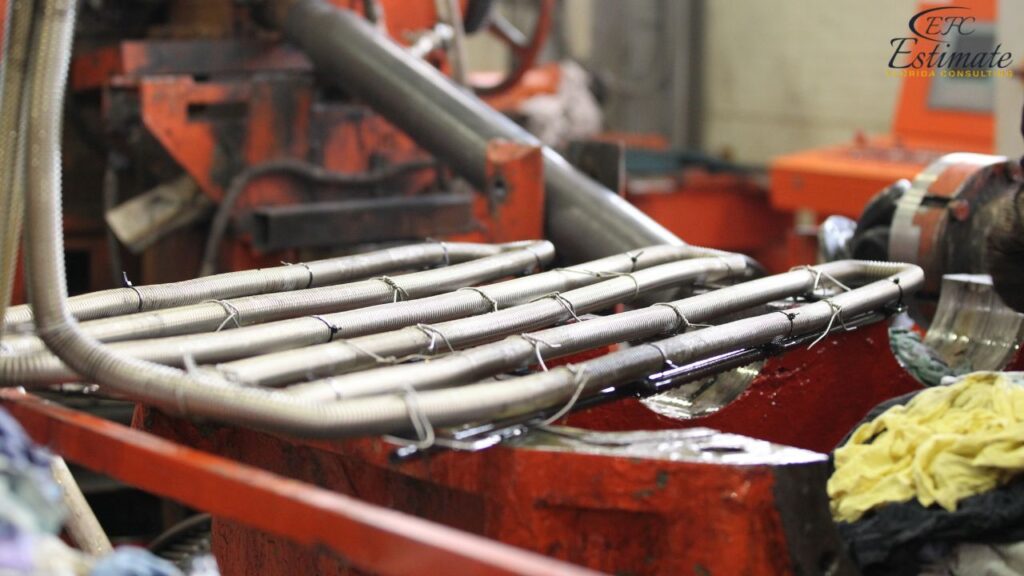
Length of Refrigerant Pipe (Feet) | Estimated Material Cost |
Up to 25 Feet | $150 – $900 |
25 – 50 Feet | $300 – $1,800 |
50 – 100 Feet | $600 – $3,600 |
Over 100 Feet | $1,200 – $7,200+ |
Accurately estimating the length of the refrigerant pipe needed for your project is essential for budgeting. It’s important to consider not only the straight-line distance but also any additional length required to navigate around obstacles or accommodate bends and turns in the pipe.
Pipe Insulation (Upgrade or Replacement):
Proper insulation of refrigerant pipes is crucial for maintaining the efficiency of your HVAC system. Upgrading or replacing insulation typically costs between $1.44 and $5.04 per linear foot, depending on the type of insulation used and the length of the pipes. Insulation is especially important for pipes that run through unconditioned spaces, where temperature differences can cause energy loss and reduce system efficiency.
Firestopping and Sealing:
Proper firestopping and sealing are essential for preventing the spread of fire and ensuring that refrigerant pipes are safely installed through walls, floors, or ceilings. Firestopping and sealing costs typically range from $72 to $432 per project, depending on the complexity of the installation and the materials required. This process involves using fire-resistant materials to seal gaps around refrigerant pipes and ensure that the system meets fire safety codes.
Annual Maintenance Plan:
Regular maintenance is crucial for keeping your refrigerant pipes and the overall HVAC system in good working condition. An annual maintenance plan typically costs between $180 and $600 per year and includes services such as inspections, leak detection, refrigerant level checks, and minor repairs. Investing in a maintenance plan helps extend the lifespan of your HVAC system and ensures that it continues to operate efficiently and safely.
Vibration and Noise Reduction Measures:
To prevent vibration and noise from refrigerant pipes, especially in residential installations, additional measures such as vibration dampers, flexible connectors, or soundproofing materials may be required. These measures typically cost between $120 and $600, depending on the extent of the noise and vibration issues. Addressing these issues is important for maintaining a comfortable living or working environment and ensuring the long-term durability of the refrigerant lines.
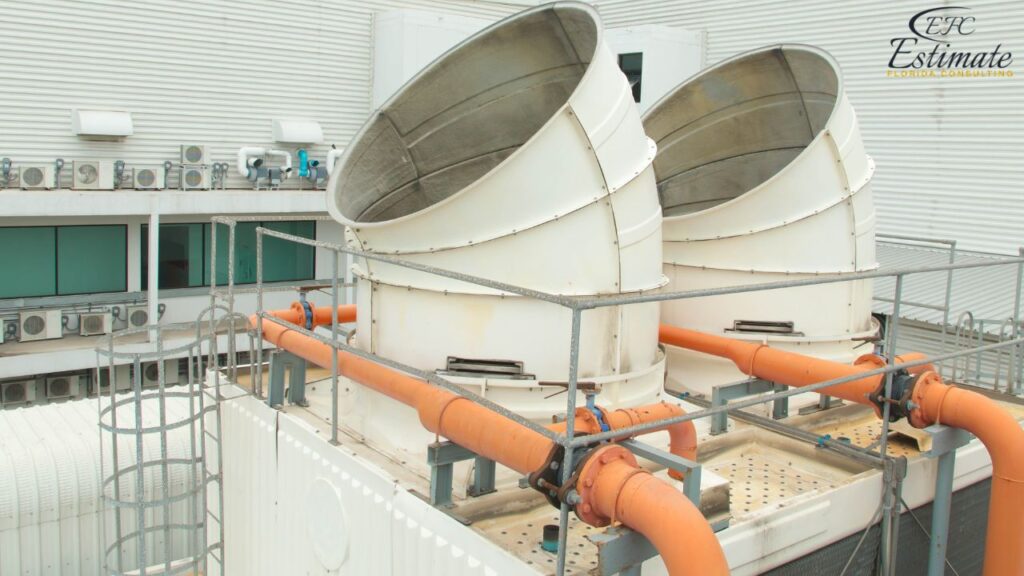
Additional Costs: Insulation, Fittings, and Connections
In addition to the cost of materials and labor, there are additional expenses to consider when budgeting for refrigerant pipe installation, including insulation, fittings, and connections.
Insulation Costs:
Proper insulation of refrigerant pipes is essential for preventing energy loss and maintaining the correct temperature of the refrigerant. The cost of insulation typically ranges from $1.20 to $3.60 per linear foot, depending on the type and quality of the insulation material. Pre-insulated line sets may already include insulation, but additional insulation may be required for certain applications or to meet local code requirements.
Fittings and Connections Costs:
Installing refrigerant pipes often requires various fittings and connections, such as elbows, tees, couplings, and flare nuts. The cost of fittings and connections can vary depending on the complexity of the installation and the type of pipe used, typically ranging from $60 to $240 for a standard residential installation. Properly securing all connections is critical for preventing leaks and ensuring the efficient operation of the HVAC system.
Refrigerant Costs:
If your installation involves replacing old refrigerant pipes or adding new refrigerant to the system, you’ll also need to consider the cost of the refrigerant itself. The cost of refrigerant varies depending on the type and amount needed, typically ranging from $60 to $240 per pound. It’s important to use the correct type of refrigerant for your system and to handle it with care, as refrigerants can be harmful to the environment if released.
Estimating the Total Cost: A Detailed Example for a 50-Foot Copper Refrigerant Pipe Installation
To provide a clearer understanding of what to expect, here’s an example of estimating the cost for installing a 50-foot copper refrigerant pipe in a residential HVAC system, including labor, insulation, and fittings.
- Copper Refrigerant Pipe: $6 – $18 per linear foot
- Professional Installation: $12 – $36 per linear foot
- Insulation: $1.20 – $3.60 per linear foot
- Fittings and Connections: $60 – $240
Cost Component | Low Estimate | High Estimate |
Copper Pipe (50 ft.) | $300 | $900 |
Professional Labor (50 ft.) | $600 | $1,800 |
Insulation (50 ft.) | $60 | $180 |
Fittings and Connections | $60 | $240 |
Total Estimated Cost | $1,020 | $3,120 |
This example demonstrates how various components contribute to the overall cost of your refrigerant pipe installation project. By understanding these costs, you can better plan your budget and ensure that all aspects of the project are covered, leading to a successful and reliable HVAC system installation. Proper planning also helps you avoid unexpected expenses, ensuring that your project stays within budget. The detailed breakdown provides transparency and allows you to see exactly where your money is being spent, helping you make informed decisions throughout the process.
Refrigerant Pipes Cost Estimation
Accurate cost estimation is essential for the success of any refrigerant pipe installation or replacement project. It helps prevent unexpected expenses that could disrupt your budget and timeline, ensuring that your project stays on track from start to finish. Misestimating the length of piping required, the type of material, or the complexity of the installation can lead to significant cost overruns and delays, which can negatively impact the overall success of the project. A precise estimate allows you to manage your resources more effectively, ensuring that the right materials and labor are available when needed. Estimate Florida Consulting provides accurate estimate services that deliver the precision needed to keep your project on budget and on schedule, ensuring that it meets the highest standards of quality and efficiency.
Refrigerant Pipes Cost Calculator:
To assist you in planning and budgeting your refrigerant pipe installation or replacement project more accurately, Estimate Florida Consulting provides estimate services that include a comprehensive cost calculator. This tool allows you to input specific details about your project, such as the type of refrigerant pipe, the total length required, and the complexity of the installation. The calculator then provides an estimated cost range tailored to your project’s specific needs, offering you a clear understanding of what to expect financially. This cost calculator is an invaluable resource that helps ensure your project plans align with your budget, allowing you to allocate the necessary financial resources effectively.
Get 5 New Leads Next 7 Days With Our System
- Multi-Family House
- Single-Faimly House
- Modern House
- Duplex
- Ranch House
- Bungalow
Why Choose New Refrigerant Pipes? Benefits for Efficiency and System Performance
Enhanced Efficiency:
New refrigerant pipes ensure that your HVAC system operates at peak efficiency, reducing energy consumption and minimizing downtime. Properly sized and installed refrigerant pipes are crucial for maintaining the correct refrigerant flow and pressure, which directly impacts the system’s cooling and heating performance. Estimate Florida Consulting provides estimate services that help you select the best refrigerant piping solutions for your needs, ensuring consistent efficiency and reliability.
Longevity and Durability:
In addition to enhancing efficiency, new refrigerant pipes provide increased durability and longevity, reducing the need for frequent repairs and maintenance. Investing in high-quality refrigerant pipes ensures that your HVAC system can handle the demands of your application for years to come. Estimate Florida Consulting provides estimate services that help you choose reliable, long-lasting refrigerant pipes, providing you with peace of mind and value for your investment.
Why Invest in Quality Refrigerant Pipes? Efficiency, Performance, and Longevity
Investing in high-quality refrigerant pipes is crucial for ensuring the efficiency, performance, and longevity of your HVAC system. Properly installed and insulated refrigerant pipes help maintain the correct temperature and pressure of the refrigerant, which is vital for the system’s operation.
Efficiency:
Refrigerant pipes play a critical role in the overall efficiency of your HVAC system. High-quality pipes that are correctly sized and installed ensure that the refrigerant flows smoothly between the indoor and outdoor units, maximizing the system’s cooling or heating efficiency. Proper insulation of these pipes also prevents energy loss, which can otherwise lead to higher energy consumption and increased utility bills.
Performance:
The performance of your HVAC system heavily depends on maintaining the correct refrigerant levels and pressures. Any leaks, blockages, or improper installation of refrigerant pipes can disrupt the system’s operation, leading to reduced cooling or heating capacity. By investing in quality pipes and professional installation, you can ensure that your system operates at peak performance, providing consistent and reliable comfort.
Longevity:
Properly installed and maintained refrigerant pipes can significantly extend the life of your HVAC system. High-quality materials, along with proper insulation and secure connections, help prevent leaks and other issues that can lead to costly repairs or premature system failure. By ensuring that your refrigerant pipes are in good condition, you can protect your investment and avoid unnecessary expenses down the line.
Long-Term Benefits of Investing in Quality Refrigerant Pipes
Investing in quality refrigerant pipes offers numerous long-term benefits that can significantly impact the efficiency, performance, and lifespan of your HVAC system. By choosing high-quality materials and ensuring proper installation, you can enjoy a reliable and cost-effective HVAC system that meets your cooling and heating needs for years to come.
Energy Efficiency:
High-quality refrigerant pipes with proper insulation ensure minimal energy loss during the transfer of refrigerant between the indoor and outdoor units. This efficiency translates into lower energy consumption and reduced utility bills. Over time, the energy savings can offset the initial investment in higher-quality pipes and professional installation, making it a cost-effective choice in the long run.
Energy Efficiency:
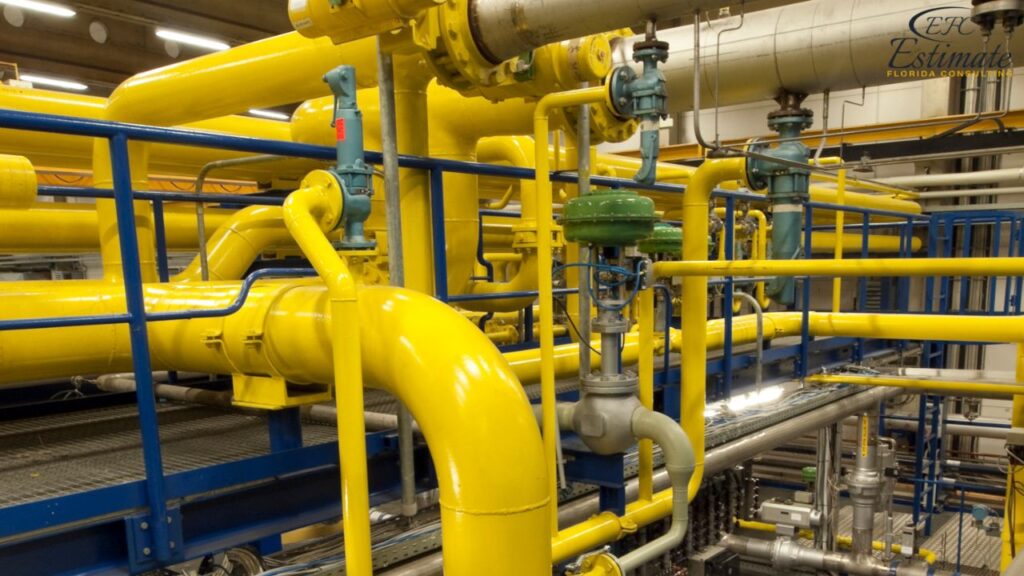
High-quality refrigerant pipes with proper insulation ensure minimal energy loss during the transfer of refrigerant between the indoor and outdoor units. This efficiency translates into lower energy consumption and reduced utility bills. Over time, the energy savings can offset the initial investment in higher-quality pipes and professional installation, making it a cost-effective choice in the long run.
Enhanced System Performance:
Properly installed refrigerant pipes help maintain the correct pressure and temperature of the refrigerant, ensuring that your HVAC system operates at its best. This consistency in performance leads to better cooling and heating, providing a more comfortable indoor environment. Whether it’s maintaining a cool temperature during the summer or ensuring warmth in the winter, high-quality refrigerant pipes are essential for delivering reliable comfort.
Reduced Maintenance and Repair Costs:
Investing in durable and reliable refrigerant pipes reduces the likelihood of leaks, blockages, and other issues that can lead to costly repairs. By minimizing the need for frequent maintenance and repairs, you can extend the lifespan of your HVAC system and avoid unexpected expenses. Regular inspections and timely maintenance can further enhance the longevity of your system, ensuring that it continues to operate efficiently for many years.
Environmental Benefits:
Using high-quality materials and ensuring proper installation of refrigerant pipes can significantly reduce the risk of refrigerant leaks. This not only helps maintain the efficiency of your HVAC system but also has positive environmental benefits. Refrigerants, especially older types like R-22, can have harmful effects on the environment if released into the atmosphere. By preventing leaks, you contribute to environmental protection and comply with regulations aimed at reducing greenhouse gas emissions.
Download Template For Refrigerant Pipes Project Breakdown
- Materials list updated to the zip code
- Fast delivery
- Data base of general contractors and sub-contractors
- Local estimators
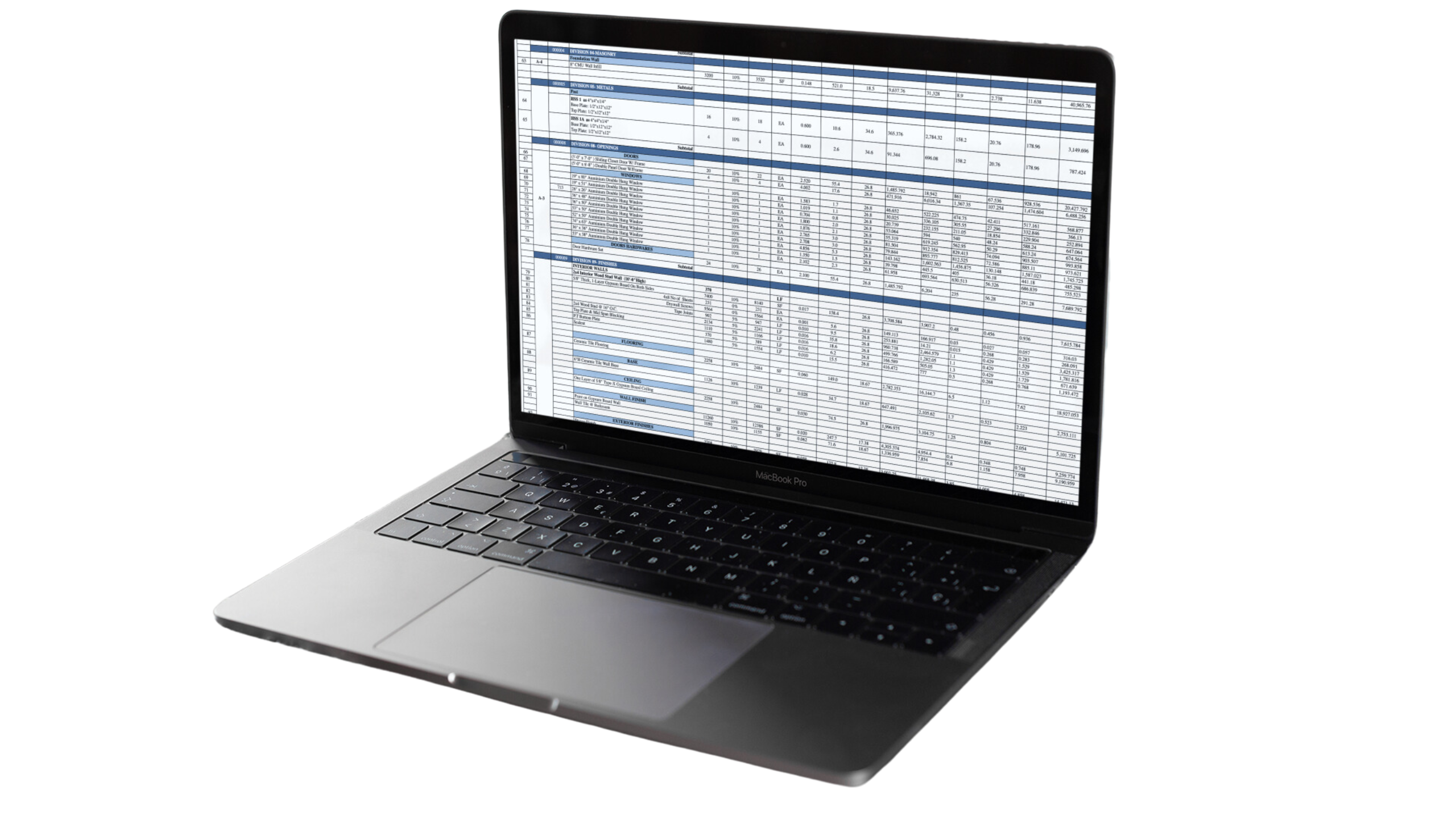
Conclusion
Accurate cost estimation is the foundation of a successful refrigerant pipe installation or replacement project. Estimate Florida Consulting provides comprehensive and precise estimate services that help you plan and execute your project with confidence. By understanding the cost components and potential variables, you can make informed decisions that align with your budget and project goals. Contact us today to get started with your refrigerant pipes cost estimator services, and take the first step toward creating an efficient, reliable, and cost-effective HVAC system. With our expert guidance and detailed cost breakdowns, you can be assured that your project will be completed on time, within budget, and to the highest standards of quality and performance. Our commitment to excellence ensures that every aspect of your project is handled with the utmost care and professionalism, resulting in a refrigerant pipe system that not only meets your needs but also enhances the overall efficiency and performance of your HVAC system.
FAQs
The cost of installing or replacing refrigerant pipes ranges from $10 to $30 per linear foot, including materials and labor. Total project costs can vary from $1,000 to $30,000, depending on the scope, application, and specific requirements, such as residential, commercial, or industrial HVAC systems.
Several factors affect the cost of refrigerant pipe installation, including:
- Material Used: Copper, aluminum, or flexible line sets.
- Length of Pipe Required: Longer installations require more materials and labor.
- Project Complexity: New installations, replacements, or extensions each have different cost implications.
- Labor Costs: Professional installation is recommended and varies based on location and project difficulty.
Here’s a breakdown of refrigerant pipe costs by material:
- Copper Pipe: $14.40 – $36.00 per linear foot (installed)
- Insulated Copper Pipe: $18.00 – $42.00 per linear foot (installed)
- Aluminum Pipe: $12.00 – $30.00 per linear foot (installed)
- Flexible Copper Pipe: $15.60 – $38.40 per linear foot (installed)
Costs can vary depending on the specific project type:
- New Refrigerant Pipe Installation: $720 – $4,320
- Refrigerant Pipe Replacement: $600 – $3,360
- Refrigerant Pipe Extension: $360 – $2,160
- Insulation Upgrade for Existing Pipes: $480 – $2,400
- Commercial HVAC Refrigerant Line Installation: $2,160 – $7,200
In addition to material and labor, consider the following additional costs:
- Permits and Inspection Fees: $144 – $720
- Pipe Insulation (Upgrade or Replacement): $1.44 – $5.04 per linear foot
- Firestopping and Sealing: $72 – $432 per project
- Annual Maintenance Plan: $180 – $600 per year
- Vibration and Noise Reduction Measures: $120 – $600
The choice of material depends on your specific needs:
- Copper: High reliability, excellent thermal conductivity, and corrosion resistance, ideal for most HVAC systems.
- Aluminum: Lightweight and cost-effective but less durable and prone to corrosion.
- Flexible Line Sets: Convenient for installation in tight spaces and retrofits, pre-insulated for efficiency.
Hiring a licensed HVAC technician ensures that refrigerant pipes are installed safely and in compliance with local building codes. Professionals have the expertise to handle complex installations, minimizing risks such as leaks, improper connections, and pressure imbalances, which can negatively affect HVAC system performance.
To estimate the total cost, consider the length of the refrigerant pipe needed, the type of material, labor costs, permits, and any additional expenses like insulation and fittings. Estimate Florida Consulting offers a cost calculator tool to help you input specific details about your project and receive a tailored cost estimate.
Investing in quality refrigerant pipes ensures enhanced efficiency, consistent performance, and long-term durability of your HVAC system. Properly installed and insulated pipes help maintain the correct refrigerant levels and pressures, reduce energy consumption, and minimize the need for frequent repairs.
Estimate Florida Consulting provides expert cost estimator services to help plan and execute your refrigerant pipe installation or replacement project. Our services ensure that your project stays within budget, meets all safety standards, and delivers optimal performance.
Google Reviews

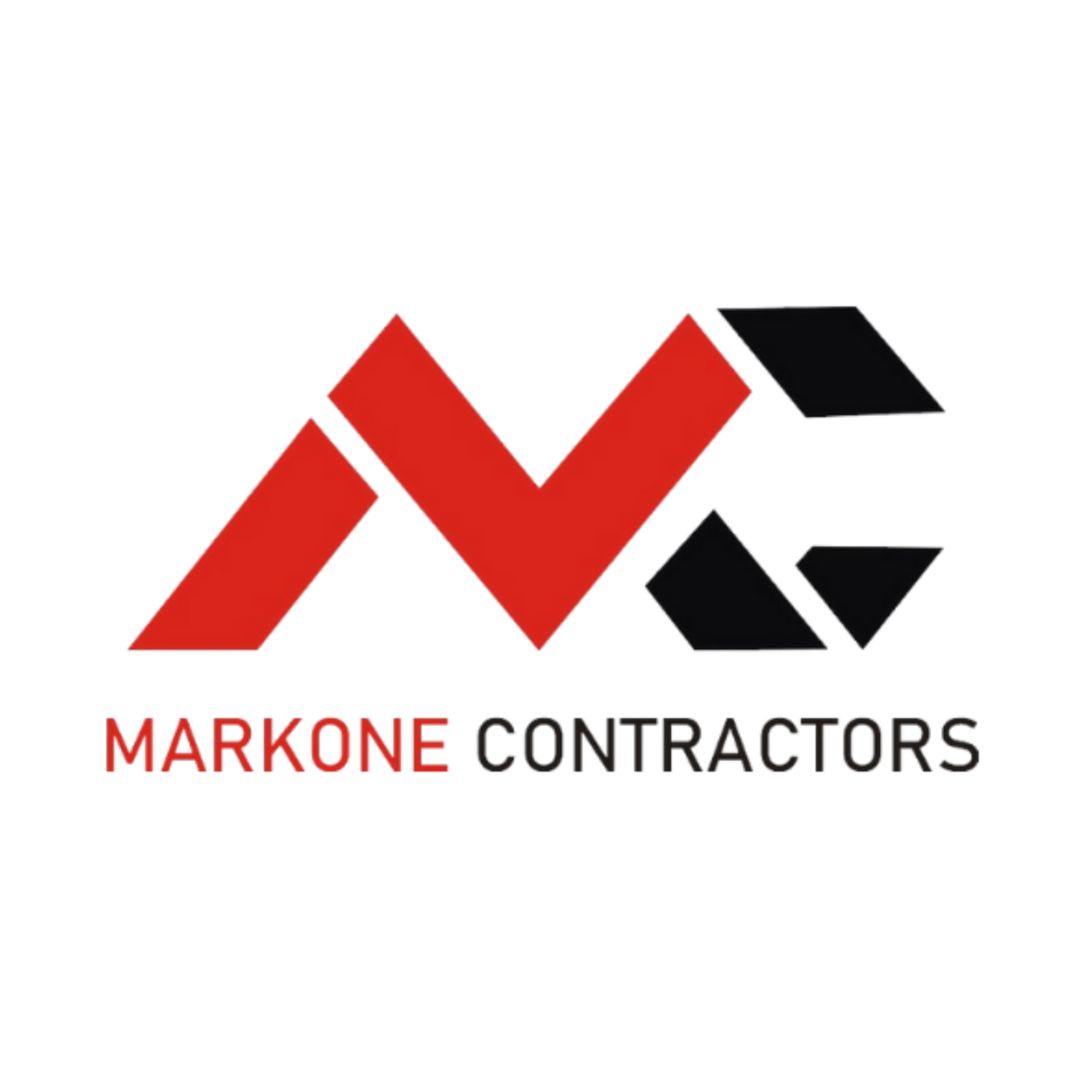

Process To Get Refrigerant Pipes Cost Estimate Report
Here I am going to share some steps to get refrigerant pipes cost estimate report.
-
You need to send your plan to us.
You can send us your plan on info@estimatorflorida.com
-
You receive a quote for your project.
Before starting your project, we send you a quote for your service. That quote will have detailed information about your project. Here you will get information about the size, difficulty, complexity and bid date when determining pricing.
-
Get Estimate Report
Our team will takeoff and estimate your project. When we deliver you’ll receive a PDF and an Excel file of your estimate. We can also offer construction lead generation services for the jobs you’d like to pursue further.

